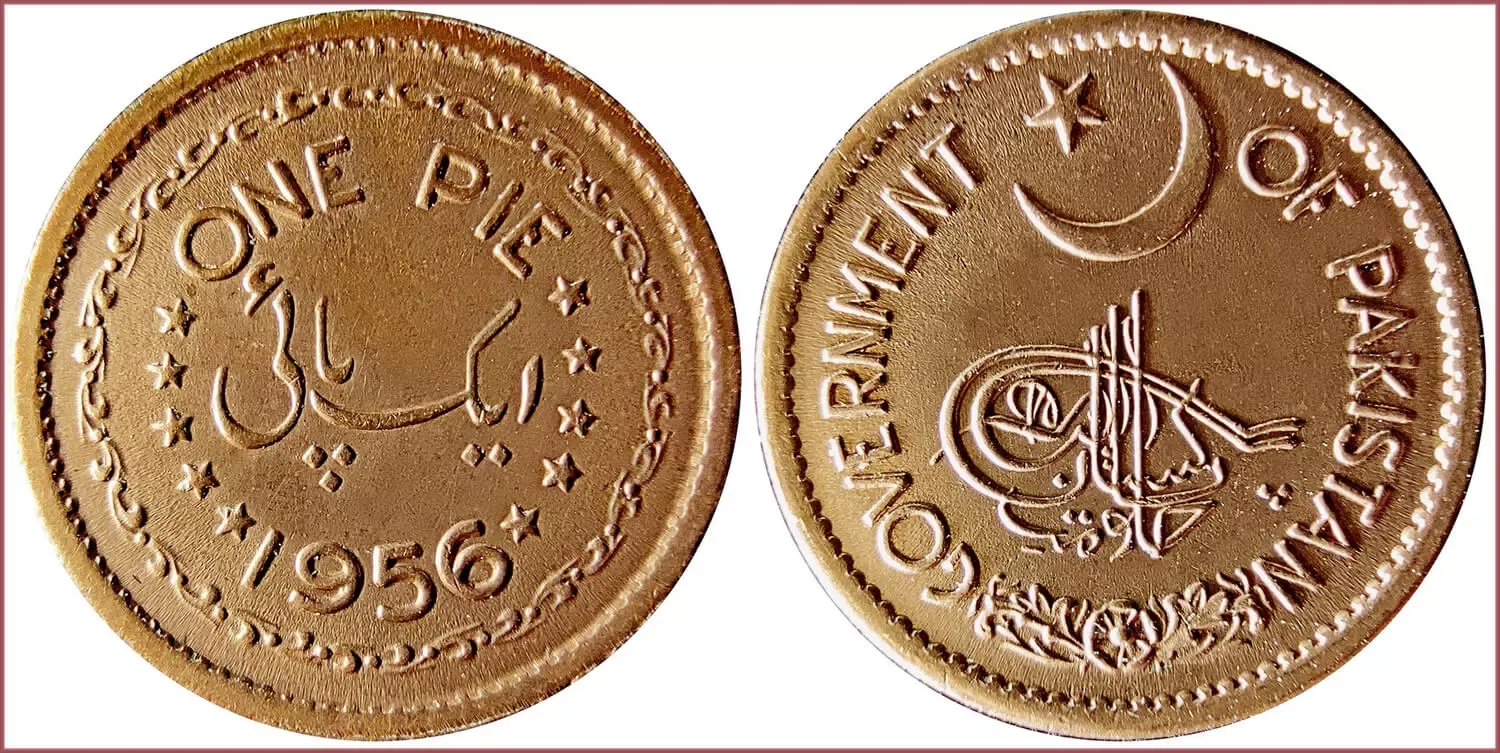PIE: COIN OF PAKISTAN
1 pie, 1956: Islamic Republic of Pakistan
ONE PIE.
ایک پائی: a pie (the denomination of the coin is duplicated by arabic script of Urdu).
Ten stars.
GOVERNMENT OF PAKISTAN.
The crescent moon and star (from the coat of arms of Pakistan) above the tughra symbolize Islam — the religion of the majority of the population and the ideology of Pakistan. Tughra in the center of the obverse of the coin could signify the symbol of spread of Islam to other realms beyond the historical Ottoman Empire, including on the territory of Pakistan.
Lahore Mint (Pakistan).
Mintage: 3.390.000.
- Bronze: 16 mm - 1.3 g
- Reference price: 5.0$
COIN PIE — WHERE & WHEN (coins catalog: by names & emitents)
- REPUBLIC OF PAKISTAN (1951-1957): pie = 1/3 pice = 1/12 anna = 1/192 rupee
- INDIA, 19th-20th centuries — BRITISH INDIA (Bengal Presidency, Bombay Presidency, Madras Presidency…) + INDIAN PRINCELY STATES (Bhopal, Gwalior, Mewar…): pie = 1/192 rupee
PIE as coin name.
Pie — smallest coin of India in the 19th and 20th centuries and Pakistan in the first decade of independence. Its value was 1/192 part of the corresponding rupee.
The name of pie coin has no relation to baked culinary dish of the same name. It comes from Marathi (an Indo-Aryan language predominantly spoken by Marathi people in the Indian state of Maharashtra): "pā'ī" — literally "a fourth".
Unfortunately, it is not known in what context this interpretation should be considered: a pie did not consist of any 4 smaller coins (in fact, each early pie consisted of 12 cowry — ancient pre-coins shell money) and did not itself constitute 1/4 of a larger coin (1 pie = 1/3 pice).
However, in the Wikipedia article on pie, you can find some interesting information about writing monetary amounts in Indian currency: for example, Rs 25/11/2/1. It is a traditional notation of monetary amount of 25 rupee, 11 anna, 2 pice and 1 pie. It was precisely pie that was recorded fourth in order...











